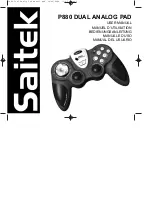
KNX Technical Reference Manual
ABB i-Bus
®
KNX Yucus
49
Note”: This parameter is only visible if the "Reaction at failing edge" parameter
is set on either "Value 2" or "Alternating Value1/Value2". The options are dependent on
the setting of the "Object type for failing edge" parameter.
Value 2 options are dependent on the setting of the "Object type for failing edge"
parameter.
–
1 bit
: switching functions (e.g. On/Off, enable/blocked, true/untrue)
–
1 byte 0 - 100%:
percentage values (0 = 0%, 255 = 100%)
–
1 byte 0 - 255
: arbitrary values from 0 to 255
–
2-byte float
: floating point value (physical values such as temperature or brightness) -
671088.64 to 671088.64
–
2-byte signed
: arbitrary values from -32768 to +32767
–
2-byte unsigned
: arbitrary values from 0 to 65,535
–
4-byte float
: floating point value (physical values) -4000000 to 4000000
–
4-byte signed:
arbitrary values from -2147483648 to 2147483647
–
4-byte unsigned
: arbitrary values from 0 to 4294967295
12.11.9
Object no
Object name
Data type
Flags
Switching (rising edge)
1 bit DPT 1.001
C, W, T, U
Switching (rising edge)
1 byte DPT 5.001
C, W, T, U
Switching (rising edge)
1 byte DPT 5.010
C, W, T, U
Switching (rising edge)
2 byte DPT 9.xxx
C, W, T, U
Switching (rising edge)
2 byte DPT 8.001
C, W, T, U
Switching (rising edge)
2 byte DPT 7.001
C, W, T, U
Switching (rising edge)
4 byte DPT 14.xxx
C, W, T, U
Switching (rising edge)
4 byte DPT 13.001
C, W, T, U
Switching (rising edge)
4 byte DPT 12.001
C, W, T, U
Switching (failing edge)
1 bit DPT 1.001
C, W, T, U
Switching (failing edge)
1 byte DPT 5.001
C, W, T, U
Switching (failing edge)
1 byte DPT 5.010
C, W, T, U
Switching (failing edge)
2 byte DPT 9.xxx
C, W, T, U
Switching (failing edge)
2 byte DPT 8.001
C, W, T, U
Switching (failing edge)
2 byte DPT 7.001
C, W, T, U
Switching (failing edge)
4 byte DPT 14.xxx
C, W, T, U
Switching (failing edge)
4 byte DPT 13.001
C, W, T, U
Switching (failing edge)
4 byte DPT 12.001
C, W, T, U
12.12
Application “1-button light scene extension unit with memory function”
When a button is activated, a predefined light scene number is call backlight up. In each
case, the application makes a separate set of parameters and communication objects
available for the 1
st
and the 2nd button. The application makes it possible to call up a light
scene via one button side while the other button side can be assigned with a further
"button-oriented" function. The user has the option to trigger a light scene memory
command via a long actuation of the button.
















































